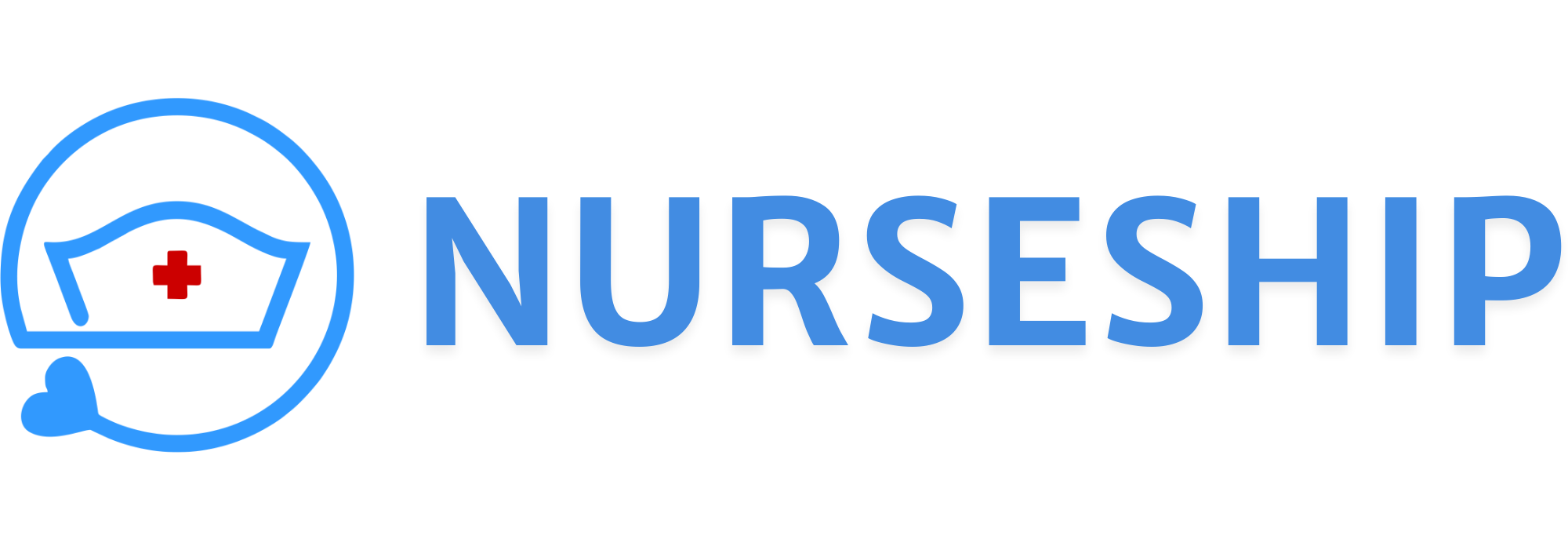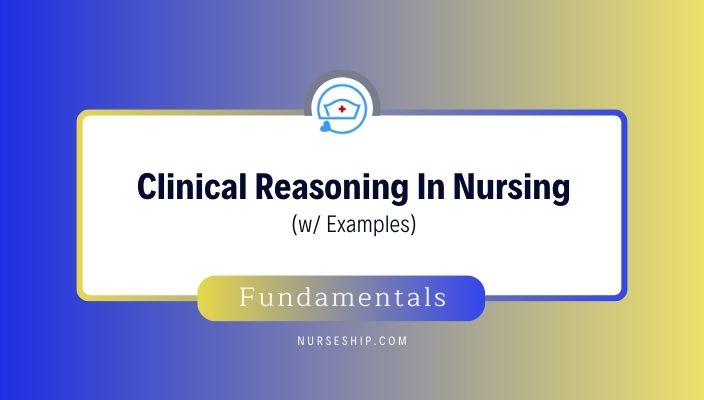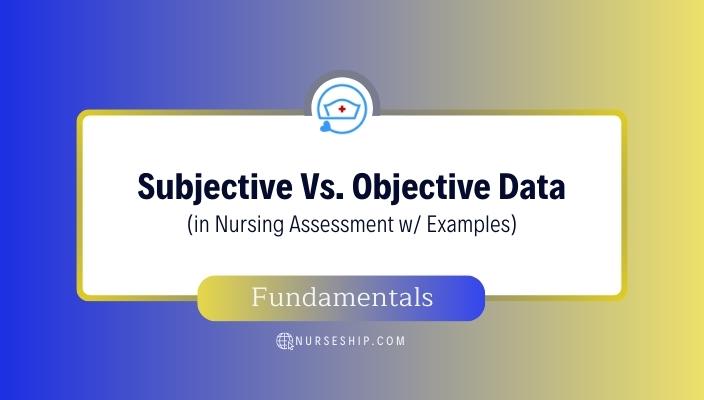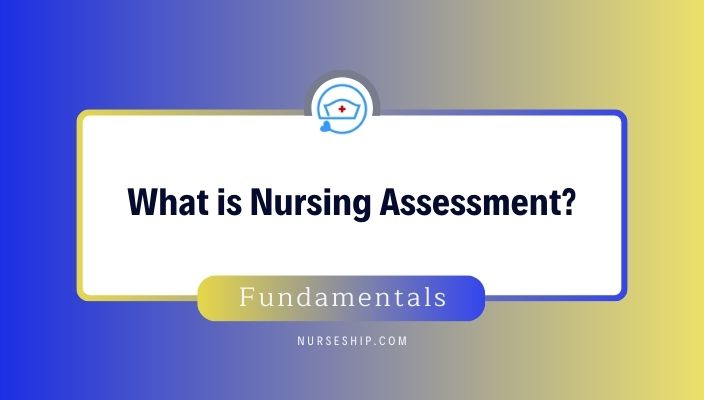In this article, we will cover:
- What is Clinical Reasoning?
- What is Clinical Reasoning in Nursing?
- Definition of Clinical Reasoning in Nursing
- What is the concept of clinical reasoning?
- What is the concept of clinical reasoning?
- Why is Clinical Reasoning Important in Nursing?
- What are the Types of Clinical Reasoning?
- What are the Three Elements of Clinical Reasoning?
- What are the Steps of Clinical Reasoning?
- What is the Importance of Clinical Reasoning and Judgement in Nursing?
- What is the difference between Critical Thinking and Clinical Reasoning?
- Clinical Reasoning in Nursing Example
What is Clinical Reasoning?
Clinical reasoning refers to the cognitive process that healthcare professionals, such as doctors, nurses, and other clinicians, use to analyze and make decisions about a patient’s condition and appropriate treatment.
It’s a complex and dynamic process that involves gathering and interpreting information from various sources, including patient history, physical examinations, laboratory tests, imaging studies, and the clinician’s own experience and knowledge.
Medicine, physical therapy, and occupational therapy were the first to introduce clinical reasoning to the healthcare disciplines. Since then, the nursing profession has used these strategies to improve patient care.
What is Clinical Reasoning in Nursing?
Clinical reasoning in nursing is dynamic and adaptive, as nurses continuously gather new information and adjust care plans based on patient responses.
It’s a crucial skill that guides nurses in providing safe, effective, and patient-centered care. Clinical reasoning involves the integration of clinical knowledge, critical thinking, and experience to address the complex and dynamic nature of patient situations.
It involves balancing medical knowledge with critical thinking, empathy, and ethical considerations to provide comprehensive and compassionate patient care.
Definition of Clinical Reasoning in Nursing
Clinical reasoning in nursing refers to the cognitive process that nurses use to collect and assess patient information, analyze data, make informed judgments, and develop appropriate care plans.
What is the Concept of Clinical Reasoning?
Clinical reasoning is the cognitive process used by healthcare professionals to make informed decisions regarding patient care.
It encompasses tasks such as collecting information, analyzing data, identifying patterns, generating hypotheses, and making judgments for diagnosis and treatment.
Clinical reasoning blends science and intuition in medical practice. It combines evidence-based knowledge with experience-derived judgment to attain accurate diagnoses and treatments while addressing uncertainties.
As an essential component of clinical practice, clinical reasoning guides healthcare providers in delivering safe and effective patient care.
Why is Clinical Reasoning Important in Nursing?
Clinical reasoning is important in nursing for several reasons. Some reasons are listed below.
Patient-Centered Care:
Clinical reasoning helps nurses tailor care plans to individual patients, considering their unique needs, preferences, and circumstances, leading to more personalized and effective care.
Safe and Effective Care:
It ensures that nurses make well-informed decisions based on thorough assessments, reducing the risk of errors and promoting patient safety.
Optimal Outcomes:
Through clinical reasoning, nurses can identify early signs of complications, make timely interventions, and contribute to better patient outcomes.
Nurtured Critical Thinking:
Clinical reasoning cultivates nurses’ critical thinking abilities, empowering them to dissect complex situations, appraise evidence, and make rational choices.
Efficient Resource Utilization:
It helps nurses prioritize care tasks, allocate resources effectively, and manage time efficiently, enhancing workflow and patient care delivery.
Evidence-Based Practice:
Nursing practice is constantly evolving with new research and evidence. Clinical reasoning involves integrating the latest evidence-based knowledge into decision-making, ensuring that care plans are aligned with the best available practices.
Complex Cases:
Nurses often encounter intricate patient cases; clinical reasoning equips them to navigate complexity, address multiple issues, and make comprehensive care plans.
Interdisciplinary Collaboration:
Effective clinical reasoning supports collaboration with other healthcare professionals, promoting well-rounded patient care.
Adaptation to Change:
In rapidly changing healthcare environments, clinical reasoning enables nurses to adapt to new information, technologies, and practices.
Critical Decision-Making:
Nurses face complex situations where quick and accurate decisions are critical. Clinical reasoning equips them with the ability to analyze data, identify patterns, and generate hypotheses. This enables nurses to make informed decisions about interventions, medications, and treatments, leading to effective care.
Early Detection and Prevention:
Through clinical reasoning, nurses can detect subtle changes in a patient’s condition that might signal complications or deterioration. This allows for early interventions, preventing potential health crises and improving patient prognosis.
Error Reduction:
Clinical reasoning encourages systematic thinking, reducing the likelihood of errors in administering medications, performing procedures, and assessing patients. This promotes patient safety and prevents adverse events.
Holistic Care:
Patient’s health is influenced by various factors beyond just medical conditions. Clinical reasoning enables nurses to consider the social, emotional, and psychological aspects of patients, promoting holistic care and overall well-being.
Ethical Dilemmas:
Nursing often involves ethical challenges. Clinical reasoning guides nurses in making ethically sound decisions by considering patients’ autonomy, values, and cultural beliefs.
Communication and Collaboration:
Clinical reasoning enhances nurses’ ability to communicate effectively with patients, families, and other healthcare professionals. It fosters collaboration by enabling nurses to articulate their assessments, interventions, and rationales clearly.
Professional Growth:
Developing strong clinical reasoning skills enhances nurses’ professional growth. It increases their confidence, competence, and ability to take on more complex patient cases and leadership roles.
In summary, clinical reasoning is an important component of nursing practice, allowing nurses to provide safe, effective, and patient-centered care.
It enables nurses to make informed decisions, improve patient outcomes, and navigate the dynamic and complex healthcare setting.
What are the Three Elements of Clinical Reasoning?
Clinical reasoning involves three key elements that healthcare professionals integrate to make informed decisions about patient care:
1. Patient Information:
This element encompasses all the relevant data about the patient’s medical history, current condition, symptoms, physical examination findings, diagnostic test results, and social and contextual factors.
Gathering comprehensive and accurate patient information is essential for forming an accurate understanding of the patient’s health status and needs.
2. Clinical Knowledge and Expertise:
Healthcare professionals draw upon their extensive medical knowledge, clinical experience, and expertise to interpret patient information.
This knowledge includes an understanding of anatomy, physiology, pathophysiology, pharmacology, and medical guidelines.
Clinical expertise is built over years of practice, exposure to a variety of cases, and ongoing learning.
3. Critical Thinking and Decision-Making Skills:
Critical thinking involves the analytical and logical thought processes that healthcare professionals use to evaluate patient information in the context of their clinical knowledge.
It includes the ability to identify patterns, assess potential diagnoses, consider alternative explanations, and weigh the pros and cons of different treatment options.
Effective decision-making is the outcome of critical thinking, as healthcare professionals choose the most appropriate course of action based on the available information.
These three elements are interdependent and work together to form the foundation of clinical reasoning.
Healthcare professionals integrate patient information with their clinical knowledge and expertise while applying critical thinking skills to reach accurate diagnoses, develop effective treatment plans, and provide high-quality patient care.
The balance between these elements varies based on the complexity of the clinical situation and the healthcare provider’s level of experience and expertise.
What are the Steps of Clinical Reasoning?
8 Stages of the Clinical Reasoning Cycle
Clinical reasoning involves several key steps:
1. Data Collection: Gathering relevant information about the patient’s medical history, symptoms, physical examination findings, and any diagnostic tests that have been conducted.
2. Pattern Recognition: Recognizing patterns and relationships in the collected data to identify potential diagnoses or issues. This involves comparing the patient’s presentation to previous cases and medical knowledge.
3. Hypothesis Generation: Formulating hypotheses or possible explanations for the patient’s condition based on the patterns and information observed. This step often involves generating a list of potential diagnoses that fit the available evidence.
4. Differential Diagnosis: Narrowing down the list of potential diagnoses by considering the likelihood of each condition and ruling out less likely options. This is where critical thinking and medical knowledge come into play.
5. Testing and Validation: Ordering further diagnostic tests or investigations to confirm or rule out specific diagnoses. This could include blood tests, imaging studies, biopsies, or other procedures.
6. Synthesis: Integrating the results of diagnostic tests and additional information to refine the diagnosis and treatment plan. This may involve adjusting the initial hypotheses based on new data.
7. Treatment Planning: Developing a comprehensive treatment plan that addresses the diagnosed condition, the patient’s unique circumstances, preferences, and any potential risks or benefits of various treatment options.
8. Monitoring and Adaptation: Continuously monitoring the patient’s progress and adjusting the treatment plan as needed based on how the patient responds and any new information that emerges.
Clinical reasoning requires a deep understanding of medical science, anatomy, physiology, and pathology, as well as the ability to apply this knowledge to real-world clinical scenarios.
It also involves critical thinking skills, logical reasoning, and the ability to handle uncertainty, as medical situations can be complex and patients may present with atypical symptoms.
Overall, clinical reasoning is a crucial skill for healthcare professionals, as it forms the foundation for making accurate diagnoses and providing effective patient care.
What is the Importance of Clinical Reasoning and Judgement in Nursing?
Clinical reasoning and judgment are of paramount importance in nursing for several reasons:
- Accurate Diagnosis and Treatment: Effective clinical reasoning enables nurses to accurately assess patients’ conditions, identify potential problems, and make informed decisions about appropriate interventions and treatments. Accurate diagnosis and treatment are crucial for improving patient outcomes and preventing complications.
- Patient Safety: Sound clinical judgment helps nurses recognize potential risks and make timely interventions to ensure patient safety. By identifying early signs of deterioration or complications, nurses can take appropriate actions to prevent adverse events.
- Individualized Care: Clinical reasoning allows nurses to tailor care plans to each patient’s unique needs, preferences, and circumstances. This patient-centered approach improves patient satisfaction and contributes to better treatment outcomes.
- Early Detection of Changes: Nurses often spend the most time with patients, which puts them in a prime position to notice subtle changes in a patient’s condition. Strong clinical reasoning skills enable nurses to detect these changes early and respond appropriately.
- Effective Communication: Nurses with strong clinical reasoning skills can communicate more effectively with patients, families, and interdisciplinary healthcare teams. They can convey complex medical information, treatment plans, and concerns in a clear and organized manner.
- Ethical Decision-Making: Clinical reasoning includes ethical considerations in decision-making. Nurses must weigh the ethical implications of their actions and decisions, especially when faced with complex situations that involve moral dilemmas.
- Resource Utilization: Effective clinical reasoning helps nurses allocate resources efficiently. By accurately assessing patient needs and prioritizing care, nurses can optimize the use of time, personnel, and equipment.
- Adaptation to Change: Healthcare is dynamic, and patients’ conditions can change rapidly. Nurses with strong clinical reasoning skills can adapt quickly to changing situations, making necessary adjustments to care plans and interventions.
- Continuity of Care: Nurses often play a critical role in ensuring continuity of care as patients transition between different healthcare settings. Effective clinical reasoning facilitates clear communication of patient information and ensures a smooth transition of care.
- Professional Growth: Developing clinical reasoning and judgment skills enhances a nurse’s professional growth. These skills are transferrable and applicable across various healthcare settings, allowing nurses to provide high-quality care regardless of the environment.
- Confidence and Job Satisfaction: Nurses who feel confident in their clinical reasoning abilities experience greater job satisfaction. Confidence comes from knowing that decisions are based on a solid foundation of knowledge, experience, and critical thinking.
- Advocacy: Nurses with strong clinical reasoning skills can effectively advocate for their patients, ensuring that their needs are met, their voices are heard, and their rights are respected within the healthcare system.
- Quality Improvement: Clinical reasoning plays a role in quality improvement efforts by identifying areas for improvement in patient care processes and outcomes.
In summary, clinical reasoning and judgment are essential for nurses to provide safe, effective, and patient-centered care.
These skills underpin the entire nursing process, enabling nurses to make informed decisions, communicate effectively, and positively impact patient outcomes and experiences.
What is the difference between Critical Thinking and Clinical Reasoning?
Critical Thinking:
Critical thinking is a cognitive process that involves analyzing, evaluating, and synthesizing information, ideas, and arguments to make reasoned judgments and decisions.
It is a broader skill applicable to various aspects of life and professions, encouraging logical, evidence-based thinking and minimizing biases.
Critical thinking aims to enhance problem-solving, decision-making, and analytical abilities in a wide range of contexts beyond healthcare.
Clinical Reasoning:
Clinical reasoning, on the other hand, is a specialized form of critical thinking that is primarily focused on healthcare and clinical situations.
It specifically pertains to the cognitive process healthcare professionals, especially nurses and doctors, use to collect, assess, analyze, and apply information to make informed clinical judgments and decisions.
Clinical reasoning is crucial for providing safe and effective patient care, as it integrates medical knowledge, patient assessments, ethical considerations, and treatment planning.
Critical Thinking vs. Clinical Reasoning
| Aspect | Critical Thinking | Clinical Reasoning |
| Definition | The ability to analyze, evaluate, and synthesize information, ideas, and arguments to make reasoned judgments and decisions. | The cognitive process of collecting, assessing, analyzing, and applying information to make informed clinical judgments and decisions. |
| Focus | Broadly applicable to various aspects of life and professions. | Primarily focused on healthcare and clinical situations. |
| Application | Applied to diverse contexts and disciplines. | Applied specifically to patient care scenarios, diagnostics, and treatment planning in healthcare. |
| Scope | Applies beyond the clinical setting. | Primarily relevant within the healthcare context. |
| Purpose | Enhances general problem-solving, decision-making, and analytical skills. | Supports safe and effective patient care by integrating medical knowledge, assessments, and ethical considerations. |
| Skill Development | Can be developed and honed through practice, reflection, and exposure to various ideas. | Developed through clinical experience, education, and applying knowledge to actual patient cases. |
| Examples | Evaluating the credibility of news sources, identifying fallacies in arguments, and analyzing the pros and cons of an issue. | Diagnosing a patient’s condition based on symptom presentation, medical history, and diagnostic tests. |
| Outcome | Encourages logical, evidence-based thinking, minimizing bias, and informed decision-making. | Leads to appropriate and well-informed interventions, improved patient outcomes, and enhanced patient safety. |
What are the Types of Clinical Reasoning?
Clinical reasoning can be categorized into different types or approaches. Each of which represents a particular way of thinking and making decisions in clinical practice.
Some of the commonly recognized types of clinical reasoning include:
- Deductive Reasoning: This type of reasoning starts with a general principle or theory and applies it to a specific case. Healthcare professionals use deductive reasoning to make predictions or decisions based on established medical knowledge. For example, if a patient presents with a set of symptoms consistent with a well-known disease, the clinician may deduce that the patient likely has that disease.
- Inductive Reasoning: In contrast to deductive reasoning, inductive reasoning involves making generalizations or conclusions based on specific observations or cases. Clinicians use inductive reasoning to form hypotheses or theories from individual patient experiences. For instance, a nurse may notice a pattern of symptoms in several patients and develop a hypothesis about a potential new condition.
- Abductive Reasoning: Abductive reasoning combines elements of both deductive and inductive reasoning. It involves making educated guesses or hypotheses to explain observations or data that don’t fit neatly into established patterns. Clinicians use abductive reasoning when they encounter cases that don’t seem to fit existing diagnoses or models, and they generate plausible explanations to guide further investigation.
- Analytical Reasoning: This type of reasoning involves systematically breaking down a complex situation or problem into smaller parts to understand its components and relationships. Healthcare professionals use analytical reasoning to dissect complex patient cases, focusing on details and relationships to arrive at a diagnosis or treatment plan.
- Intuitive Reasoning: Intuitive reasoning relies on a healthcare professional’s experience, intuition, and gut feeling. It involves drawing on one’s own clinical experience and recognizing patterns that may not be immediately apparent. Intuitive reasoning is often employed in situations where rapid decision-making is necessary.
- Procedural Reasoning: Procedural reasoning focuses on the steps or processes needed to manage a clinical situation. It involves thinking about the sequence of actions required to address a patient’s needs. For example, a nurse may use procedural reasoning when administering medications, performing wound care, or carrying out other routine clinical procedures.
- Narrative Reasoning: Narrative reasoning involves considering the patient’s story, values, and context as essential components of clinical decision-making. It emphasizes understanding the patient’s perspective and tailoring care plans to the individual’s unique circumstances.
- Hypothetico-Deductive Reasoning: This approach involves generating and testing hypotheses systematically to arrive at a diagnosis. Healthcare professionals consider various possible diagnoses, then order specific tests to confirm or rule out each hypothesis.
- Pattern Recognition Reasoning: This type of reasoning relies on recognizing familiar patterns based on clinical experience and knowledge. Healthcare providers quickly identify common clinical presentations and apply established treatment protocols.
Clinical Reasoning in Nursing Example
Scenario:
Emily Davis, a 68-year-old woman, is admitted to the medical unit with a diagnosis of Acute Exacerbation of COPD. She has a history of chronic obstructive pulmonary disease (COPD) and has been experiencing increased shortness of breath, cough, and decreased oxygen saturation levels.
How does your understanding of nursing fundamentals influence your clinical reasoning?
Nursing Action:
• Reflect on the nursing care provided to patients with COPD and respiratory distress.
• Review the pharmacologic treatments that will improve the patient’s COPD.
• Reflect the non-pharmacologic measures that will help to improve the patient’s respiratory distress.
• Determine the most appropriate assessments and interventions for managing respiratory distress in patients with COPD.
Implementation of Interventions:
• Assess Emily’s respiratory rate, depth, and effort, as well as oxygen saturation levels.
• Administer prescribed bronchodilators, and nebulization to improve airway patency.
• Elevate the head of the bed to promote better lung expansion.
• Encourage deep breathing exercises and effective coughing techniques.
• Consult with the physician to determine pharmacologic therapy
• Monitor Emily’s response to interventions and adjust care as needed.
How does your understanding of pathophysiology guide your clinical reasoning?
• Knowledge of COPD’s pathophysiology helps anticipate complications and tailor interventions.
In this scenario, the nurse’s grasp of nursing fundamentals enables them to provide appropriate care for a patient with COPD.
By considering the patient’s history and symptoms, the nurse takes action to manage respiratory distress.
Implementing interventions such as bronchodilators and elevation of the head of the bed aligns with nursing knowledge.
Additionally, understanding the pathophysiology of COPD aids in predicting potential complications and choosing interventions to support the patient’s respiratory function.
See Also:
- What is Critical Thinking in Nursing? (Explained W/ Examples)
- How To Improve Critical Thinking Skills In Nursing? 24 Strategies With Examples
- What Are Socratic Questions?
- What is the “5 Whys” Technique?
- 15 Attitudes of Critical Thinking in Nursing (Explained W/ Examples)
Conclusion
Clinical reasoning in nursing involves the skillful integration of medical knowledge, critical thinking, and patient assessment to make informed decisions about patient care.
It enables nurses to provide safe, effective, and patient-centered interventions while considering individual needs and complex healthcare situations.




